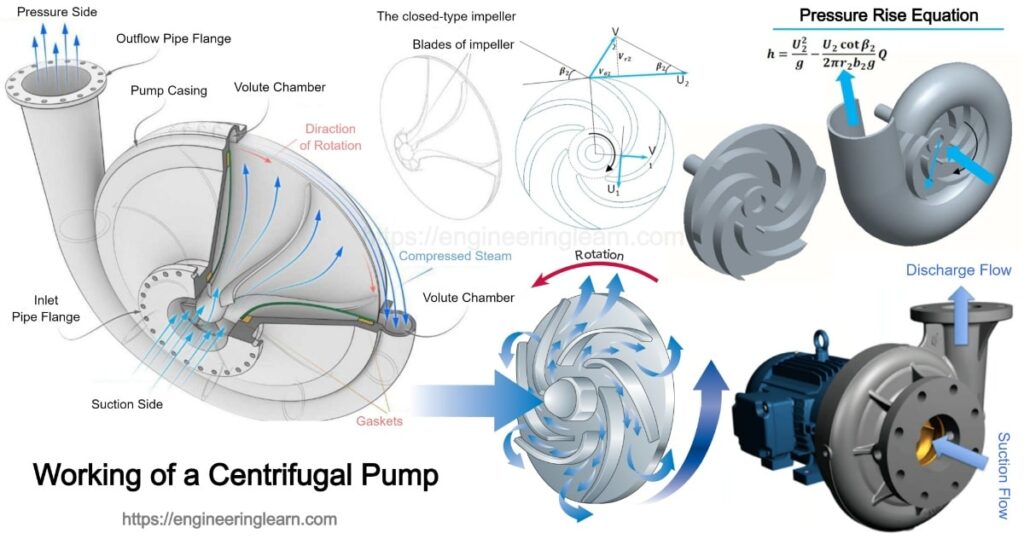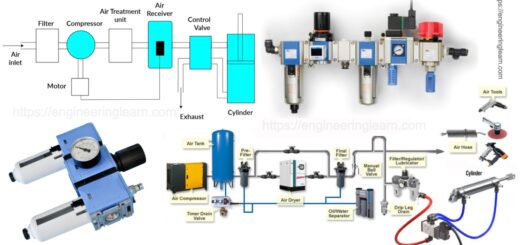Working of a Centrifugal Pump

Working of a Centrifugal Pump:- Any machine that provides energy to a fluid is termed as a pump. Generally, in pumps, electrical energy is converted into hydraulic energy. Pumps are energy absorbing devices since energy is supplied to them and they transfer most of that energy to the fluid. Pumps are widely used for domestic and agricultural purposes.
Applications of Centrifugal Pumps
They are also very much in use in the petroleum and petrochemical industries. Pumps belong to 3 categories: 1. Positive displacement 2. Centrifugal 3. Axial flow. In positive displacement pumps, the liquid is sucked in and then it is displaced due to the thrust exerted on it by a moving member which results in lifting the liquid to the required height. Piston, plunger, diaphragm, gear and vane pumps are examples of positive displacement pumps.
Centrifugal pumps are the most commonly used pumps in the world. A centrifugal pump converts rotational energy provided by a motor to hydraulic pressure energy causing the liquid to rise from a lower level to higher levels.
Components of Centrifugal Pump
A pump consists of several components such as an induction motor that is mounted at the back, a shaft that is connected from the motor to the pump, and an impeller that is mounted to the shaft. The impeller is placed inside a completely sealed casing. The casing has a volute that is present on the periphery of the casing. The part through which water enters the pump is known as suction line and the part through which water goes out is known as discharge line.
When pumping liquids, it is sometimes possible that the local pressure inside the pump falls below the vapor pressure of the liquid. If the suction pressure is only slightly above the vapor pressure, some of the liquid may flash to form vapors inside the pump. These vapors may then collapse, causing damage to the pump. This condition is known as cavitation and it should be completely avoided in order for the pump to function efficiently. In order to prevent this, water should be always filled in the impeller and suction side. This is known as priming.
Working Principle of Centrifugal Pump
The general requirement of a pump is to transport liquids from low pressure regions to high pressure regions. The induction motor provides electrical energy and rotates the shaft, which causes the rotation of the impeller. When the impeller rotates, a region of low pressure is generated and water is then sucked into the pump inlet from the reservoir (any fluid naturally moves from a region of high pressure to low pressure). The water then enters the impeller axially. The rotating impeller pushes the water outward to the boundary and towards the volute section.







